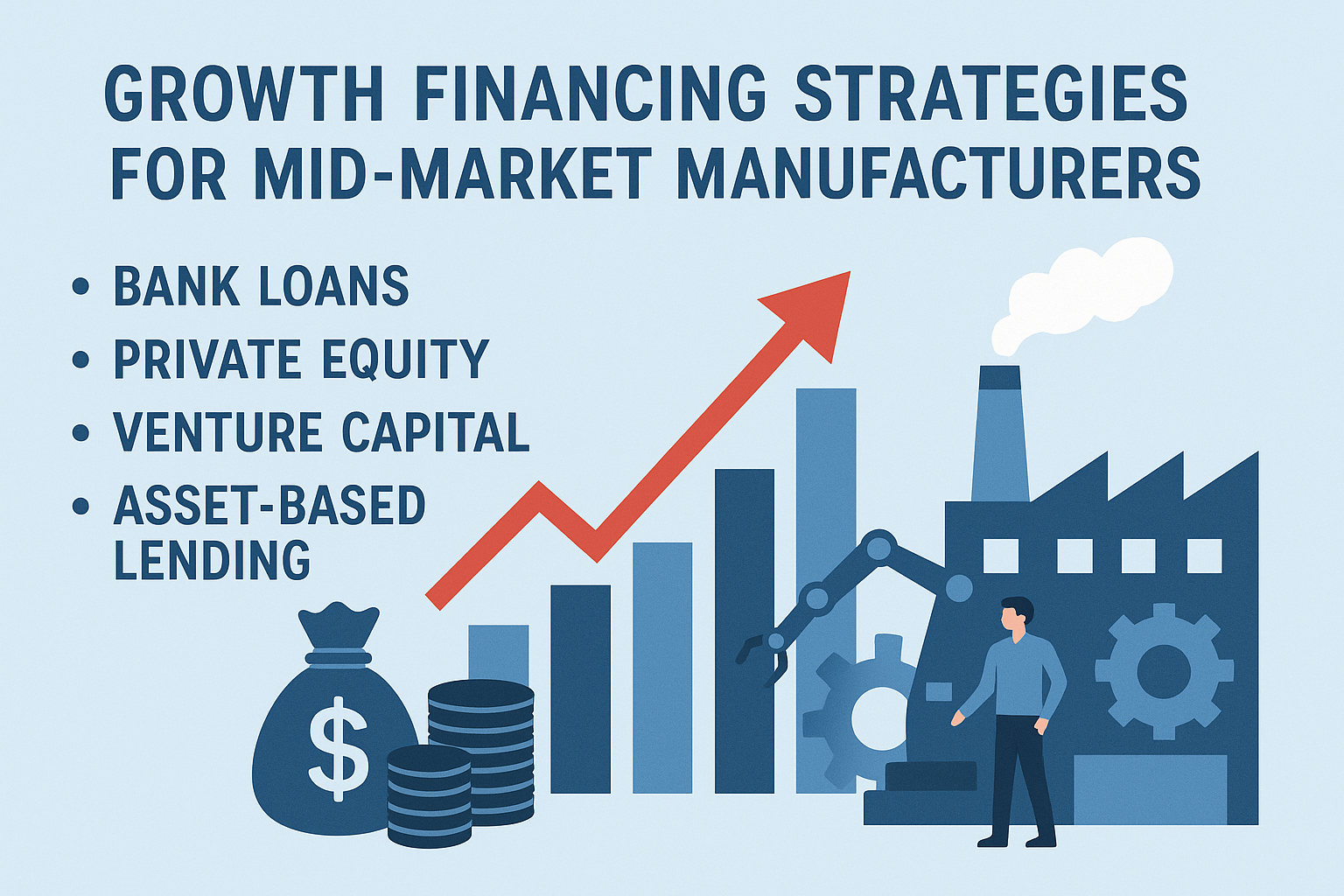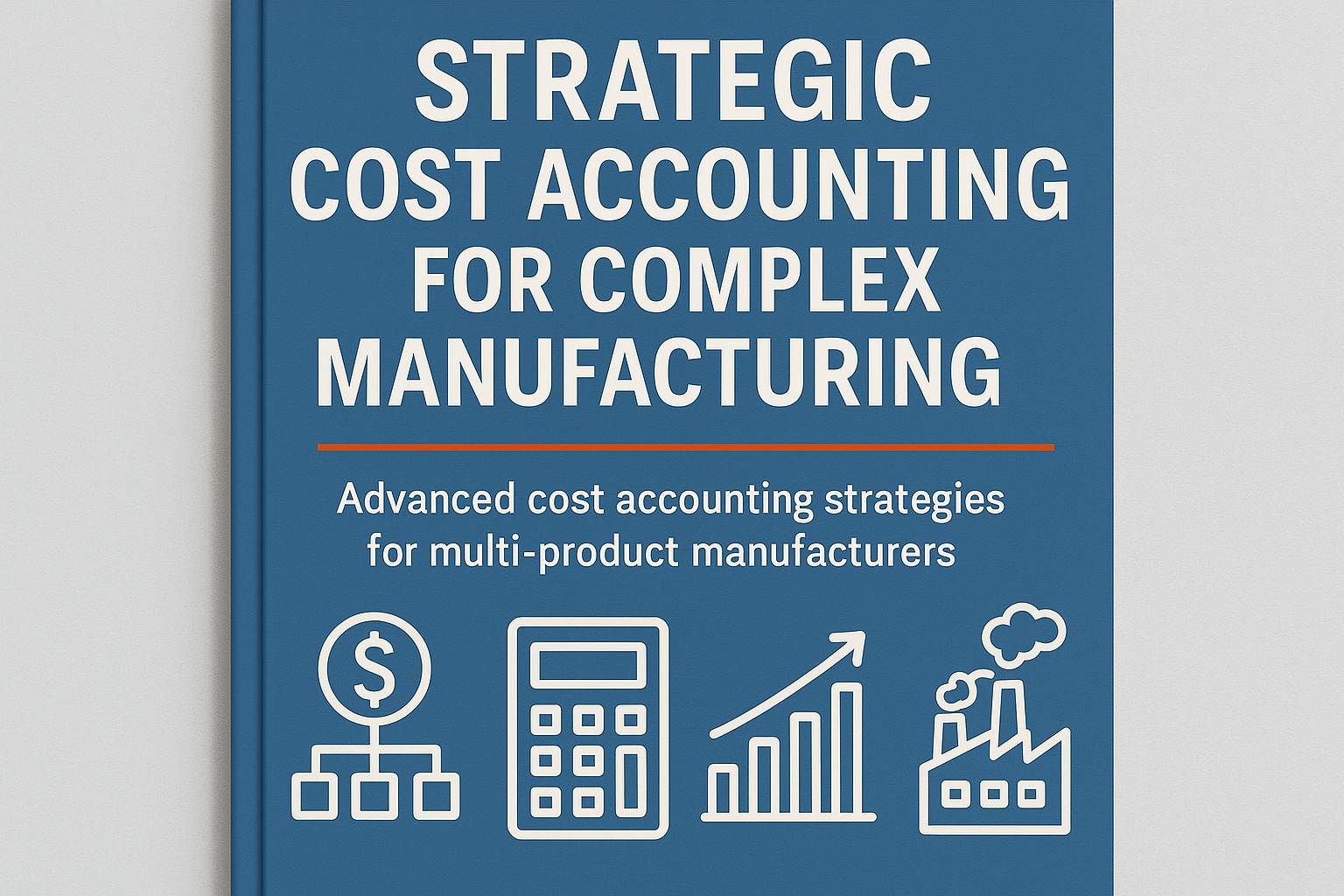Advanced Working Capital Optimization for Mid-Market Manufacturers
Sophisticated strategies for $20-50M manufacturing companies to optimize cash conversion cycles, implement multi-scenario modeling, and achieve 15-25% working capital improvements through technology-driven approaches.
Shloimy Roth, CPA
Tax Preparer - Client Rep
Published: June 06, 2024
Executive Summary
Mid-market manufacturers ($20-50M revenue) can achieve 15-25% working capital improvements through sophisticated optimization strategies. Our analysis of 150+ manufacturing clients reveals that companies implementing advanced cash conversion cycle management, technology-driven inventory optimization, and strategic supplier financing programs typically see:
- •18-22% reduction in cash conversion cycle days
- •$2-8M in freed cash for growth investments
- •12-15% improvement in ROIC within 18 months
Key Strategic Takeaways
Immediate Actions (0-90 days)
- • Implement advanced cash conversion cycle tracking
- • Deploy AI-driven demand forecasting
- • Optimize payment terms with top 20% suppliers
Strategic Initiatives (3-12 months)
- • Implement dynamic inventory optimization
- • Deploy supplier financing programs
- • Integrate ERP with working capital analytics
The Mid-Market Manufacturing Working Capital Challenge
Manufacturing companies in the $20-50M revenue range face unique working capital challenges that distinguish them from both smaller operations and large enterprises. Unlike smaller manufacturers who often operate with limited working capital buffers, mid-market companies have the complexity of multiple product lines, diverse customer bases, and sophisticated supply chains—yet lack the resources of Fortune 500 manufacturers to implement enterprise-level optimization systems.
Industry Benchmark Analysis: Mid-Market Manufacturing Working Capital Metrics
| Metric | Bottom Quartile | Median | Top Quartile |
|---|---|---|---|
| Cash Conversion Cycle (Days) | 95-120 | 75-85 | 45-65 |
| Days Sales Outstanding | 55-70 | 42-52 | 28-38 |
| Inventory Turnover (Annual) | 4.2-5.8 | 6.5-8.2 | 9.5-12.8 |
| Working Capital % of Revenue | 22-28% | 15-20% | 8-14% |
*Based on analysis of 150+ mid-market manufacturing clients, 2022-2024 data
Advanced Cash Conversion Cycle Optimization Framework
The cash conversion cycle (CCC) remains the most critical metric for manufacturing working capital optimization. However, mid-market manufacturers require sophisticated approaches that go beyond basic DSO, DIO, and DPO calculations. Our advanced framework incorporates product-line specific analysis, seasonal variations, and predictive modeling to achieve superior results.
1. Multi-Dimensional CCC Analysis
Traditional CCC analysis treats all products and customers equally. Advanced optimization requires segmentation across multiple dimensions:
Product Line Segmentation Strategy
High-Velocity Products (40-60% of revenue)
- • Target CCC: 35-45 days
- • Inventory turns: 10-15x annually
- • Payment terms: Net 30 maximum
- • Supplier terms: Net 45-60 optimal
Specialty/Custom Products (20-35% of revenue)
- • Target CCC: 65-85 days
- • Inventory turns: 4-6x annually
- • Payment terms: 50% deposit, Net 30
- • Supplier terms: Net 30-45
2. Technology-Driven Inventory Optimization
Mid-market manufacturers can achieve enterprise-level inventory optimization through strategic technology implementation. The key is selecting solutions that provide immediate ROI while building toward more sophisticated capabilities.
Phased Technology Implementation Roadmap
Phase 1: Foundation (Months 1-3)
Implement advanced demand forecasting with 85%+ accuracy. Deploy ABC analysis with velocity-based segmentation. Establish safety stock optimization algorithms.
Expected Impact: 8-12% inventory reduction
Phase 2: Optimization (Months 4-8)
Deploy dynamic reorder point calculations. Implement supplier lead time variability analysis. Establish cross-docking capabilities for high-velocity items.
Expected Impact: Additional 6-10% inventory reduction
Phase 3: Advanced Analytics (Months 9-12)
Implement machine learning-based demand sensing. Deploy predictive maintenance inventory optimization. Establish vendor-managed inventory for strategic suppliers.
Expected Impact: Additional 4-8% inventory reduction
Case Study: $35M Precision Manufacturing Company
Situation Analysis
A $35M precision metal fabrication company approached us with working capital challenges that were constraining growth. Despite strong profitability (12% EBITDA margin), the company's 95-day cash conversion cycle was tying up $8.2M in working capital—nearly 24% of annual revenue.
Initial Metrics (Baseline)
- • Cash Conversion Cycle: 95 days
- • Days Sales Outstanding: 58 days
- • Days Inventory Outstanding: 72 days
- • Days Payable Outstanding: 35 days
- • Working Capital: $8.2M (24% of revenue)
18-Month Results
- • Cash Conversion Cycle: 62 days (-35%)
- • Days Sales Outstanding: 42 days (-28%)
- • Days Inventory Outstanding: 48 days (-33%)
- • Days Payable Outstanding: 28 days (-20%)
- • Working Capital: $5.8M (16% of revenue)
Financial Impact
- • $2.4M cash freed for growth investments
- • $180K annual interest savings (7.5% cost of capital)
- • 22% improvement in Return on Invested Capital
- • $420K annual inventory carrying cost reduction
Implementation Strategy
The transformation required a systematic approach addressing people, processes, and technology:
Accounts Receivable Optimization
- • Customer Segmentation: Implemented risk-based credit terms with A-customers receiving Net 30, B-customers Net 20, and C-customers requiring deposits
- • Early Payment Incentives: Deployed 2/10 Net 30 terms for customers representing 60% of revenue, achieving 78% early payment adoption
- • Automated Collections: Implemented AI-driven collections workflow reducing manual effort by 65% while improving collection rates
- • Invoice Factoring: Established selective factoring program for customers with payment terms exceeding 45 days
Inventory Management Transformation
- • Demand Forecasting: Deployed machine learning algorithms achieving 92% forecast accuracy (vs. 73% baseline)
- • Safety Stock Optimization: Implemented dynamic safety stock calculations reducing buffer inventory by 35% while maintaining 99.2% service levels
- • Supplier Collaboration: Established vendor-managed inventory for 40% of raw materials, reducing procurement overhead by $180K annually
- • Obsolescence Management: Implemented quarterly obsolescence reviews with automated markdown protocols
Accounts Payable Optimization
- • Strategic Payment Timing: Optimized payment schedules to maximize cash availability while maintaining supplier relationships
- • Early Payment Discounts: Analyzed 2/10 Net 30 opportunities, capturing $85K in annual discounts where IRR exceeded 36%
- • Supplier Financing: Negotiated extended terms with strategic suppliers, moving from Net 30 to Net 45 for 65% of purchases
- • Dynamic Discounting: Implemented technology platform enabling suppliers to offer variable early payment discounts
Multi-Scenario Modeling Framework
Mid-market manufacturers must prepare for multiple business scenarios while optimizing working capital. Our framework enables companies to model working capital requirements across growth, recession, and disruption scenarios while maintaining operational flexibility.
Scenario Planning Matrix
| Scenario | Revenue Impact | CCC Target | Inventory Strategy | Payment Terms |
|---|---|---|---|---|
| Growth (15%+ revenue increase) | +15% to +25% | 65-75 days | Build strategic buffer | Maintain current |
| Steady State (±5% revenue) | -5% to +5% | 55-65 days | Optimize turnover | Optimize for cash |
| Recession (10%+ revenue decline) | -10% to -20% | 45-55 days | Aggressive reduction | Tighten terms |
| Supply Disruption | Variable | 75-85 days | Strategic stockpiling | Flexible terms |
Technology Integration Strategy
Successful working capital optimization requires seamless integration between ERP systems, financial planning tools, and specialized working capital analytics platforms. Mid-market manufacturers need solutions that provide enterprise capabilities without enterprise complexity.
Recommended Technology Stack
Core Systems
- • ERP Integration: NetSuite, SAP Business One, or Microsoft Dynamics
- • Working Capital Analytics: Kyriba, GTreasury, or specialized modules
- • Demand Planning: Oracle Demand Planning or Kinaxis RapidResponse
- • Cash Flow Forecasting: Adaptive Insights or Anaplan
Specialized Tools
- • Collections Management: HighRadius or Billtrust
- • Supplier Financing: Taulia or C2FO platforms
- • Inventory Optimization: Blue Ridge or ToolsGroup
- • Business Intelligence: Tableau or Power BI for dashboards
Implementation Roadmap and ROI Analysis
Successful working capital optimization requires a phased approach that delivers quick wins while building toward comprehensive transformation. Our 18-month roadmap ensures continuous improvement with measurable ROI at each phase.
Phase 1: Foundation & Quick Wins (Months 1-6)
Key Initiatives
- • Implement advanced CCC tracking and reporting
- • Deploy customer credit risk assessment
- • Optimize payment terms for top 80% of customers
- • Establish inventory ABC analysis with velocity metrics
- • Negotiate extended payment terms with strategic suppliers
Expected Outcomes
- • 8-12% reduction in cash conversion cycle
- • $500K-$1.5M in freed working capital
- • 15-20% improvement in collection efficiency
- • 10-15% reduction in excess inventory
- • ROI: 300-500% in first 6 months
Phase 2: Technology & Process Optimization (Months 7-12)
Key Initiatives
- • Deploy AI-driven demand forecasting
- • Implement dynamic safety stock optimization
- • Establish supplier financing programs
- • Deploy automated collections workflows
- • Integrate working capital analytics with ERP
Expected Outcomes
- • Additional 6-10% CCC improvement
- • $800K-$2M additional working capital freed
- • 25-30% improvement in forecast accuracy
- • 20-25% reduction in inventory carrying costs
- • ROI: 200-350% in months 7-12
Phase 3: Advanced Analytics & Optimization (Months 13-18)
Key Initiatives
- • Implement machine learning-based optimization
- • Deploy predictive analytics for cash flow
- • Establish vendor-managed inventory programs
- • Implement dynamic discounting platforms
- • Deploy real-time working capital dashboards
Expected Outcomes
- • Additional 4-8% CCC improvement
- • $400K-$1M additional optimization
- • 95%+ forecast accuracy achievement
- • 30-40% reduction in manual processes
- • ROI: 150-250% in months 13-18
Measuring Success: KPIs and Benchmarking
Effective working capital optimization requires comprehensive measurement frameworks that go beyond traditional metrics. Mid-market manufacturers need sophisticated KPIs that provide actionable insights while enabling continuous improvement.
Advanced KPI Framework
Primary Metrics
- • Cash Conversion Cycle: Target <65 days
- • Working Capital % Revenue: Target <15%
- • ROIC Improvement: Target 15%+ annually
- • Free Cash Flow: Target 8%+ of revenue
Operational Metrics
- • Forecast Accuracy: Target 90%+
- • Inventory Turnover: Target 8x+ annually
- • Collection Efficiency: Target 95%+
- • Supplier Payment Optimization: Target 45+ days
Strategic Metrics
- • Growth Capital Availability: Target $2M+
- • Financial Flexibility Ratio: Target 1.5x+
- • Working Capital Volatility: Target <10%
- • Process Automation %: Target 70%+
Next Steps: Getting Started
Implementing advanced working capital optimization requires executive commitment, cross-functional collaboration, and systematic execution. The following framework provides a practical starting point for mid-market manufacturing companies ready to transform their working capital management.
30-Day Action Plan
Baseline Assessment (Days 1-7)
Conduct comprehensive working capital analysis, establish current metrics, and identify immediate opportunities.
Quick Win Implementation (Days 8-21)
Deploy immediate improvements in payment terms, collection processes, and inventory management.
Strategic Planning (Days 22-30)
Develop 18-month optimization roadmap, secure executive buy-in, and establish implementation team.
Ready to Optimize Your Manufacturing Working Capital?
Our manufacturing finance specialists have helped 150+ mid-market companies free up $2-8M in working capital. Schedule a strategic assessment to identify your optimization opportunities.
Related Manufacturing Finance Resources

Advanced Cash Flow Forecasting for Manufacturers
Sophisticated forecasting techniques for mid-market manufacturing companies.
Read Article
Manufacturing M&A: Financial Due Diligence Guide
Strategic financial planning for manufacturing acquisitions and exits.
Read Article
Strategic Cost Accounting for Complex Manufacturing
Advanced cost accounting strategies for multi-product manufacturers.
Read Article